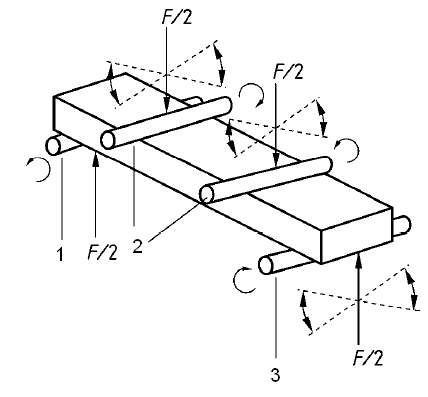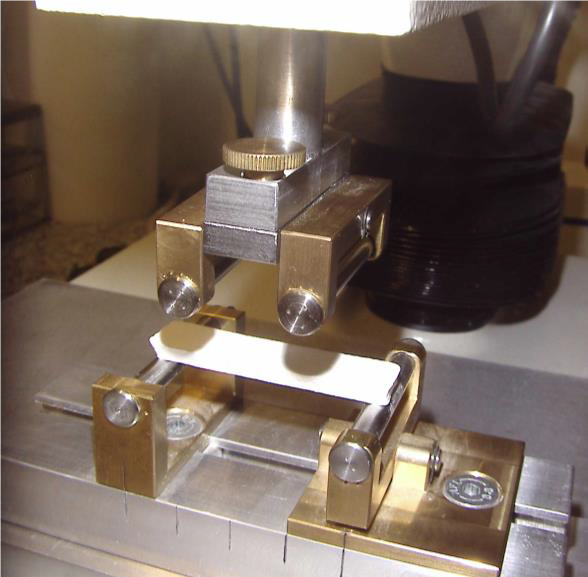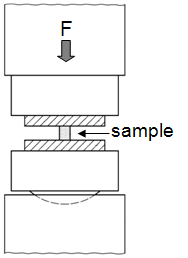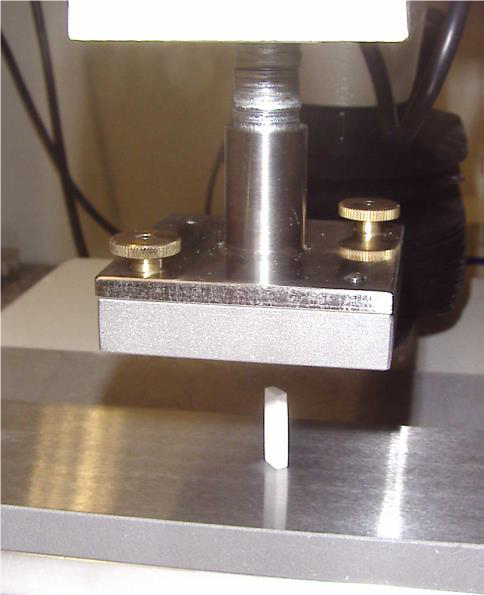Mechanical testing – compression and four-point bending test
Determining the mechanical properties of materials provides important information regarding the structure and the technical application performance. Compression tests offer information about the compressive strength and bending flexural test about the flexural strength of an object.
Four-point flexural test
In the four-point flexural test a sample is placed on two supporting pins and centrally charged at two pressure lines with a testing piston. The experimental setup (Figure 1) of our four-point flexural bending test and the testing procedure is based on DIN EN 843-1. From the recorded bending force- and deflection data, the stress-strain curve of the samples can be determined.


Figure 1 left: schematic picture of the four-point flexual test: 1: Support-roll, parallel to sample direct axis - rollable, 2: stress roll, parallel to sample direct axis, rollable and transversely tiltable, 3: stress roll, parallel to sample direct axis, rollable and transversely tiltable.
right: self build four point flexual test setup according to DIN EN 843-1
Compression test
In the compression test (Figure 2) a cylindrical or rectangular sample is loaded with a force till material failure. Our test setup is designed according to DIN 51104 [2]. Brittle materials tend to break abruptly when reaching the maximum load. Deformable materials tend to not break immediately at a critical load. Therefore, occurrence of first cracks is often used as failure criterion.


Figure 2
Left: schematic picture of the compression test according to DIN 51104
right: self build test setup according to DIN 51104 with sample
Specifications
Sample volume: at least five samples with 50x12x5 mm in size (LxWxH)
Max. loading force: 500 N
